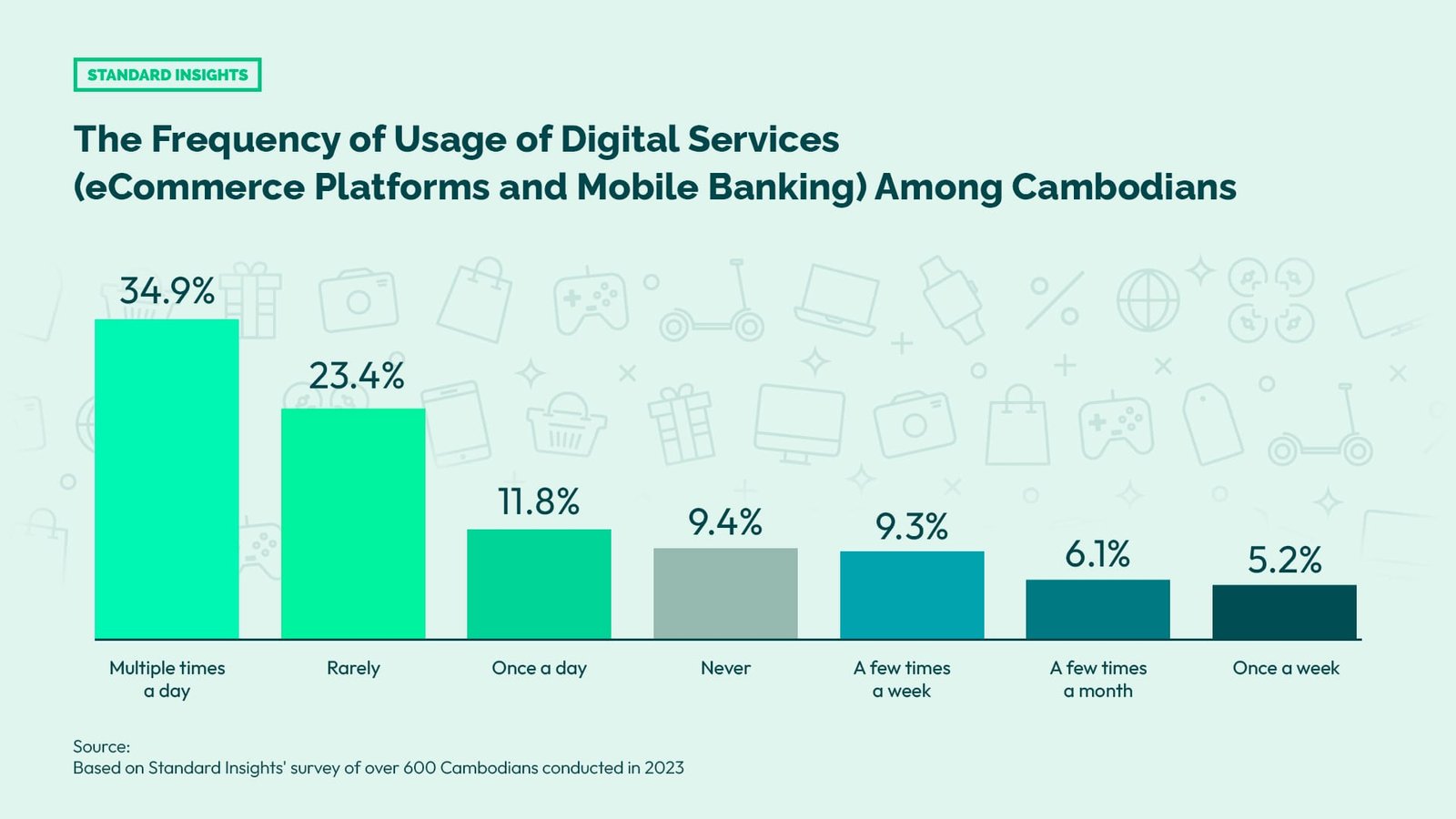Cambodia’s digital economy is expanding fast, fueled by mobile-first consumers and booming e-commerce. At the heart of this transformation is Cambodia digital service growth, now a defining feature of the country’s economic evolution.
In 2023, Cambodia’s digital economy transactions totaled USD 1.62 billion. By 2027, that figure is expected to nearly double to USD 2.87 billion, growing at a 15.37% annual rate. This rapid rise shows that digital services are becoming a daily reality for millions.
Mobile Access Is Driving Cambodia Digital Service Growth, and Everything
Cambodia’s mobile penetration rate stands at 131.5%, meaning there are more mobile connections than people. This exceptional access has opened the door to digital banking, e-commerce, and content consumption for nearly everyone.

In fact, 90.6% of Cambodians now use digital services regularly. From buying products via social apps to scanning QR codes for payments, mobile connectivity is the backbone of Cambodia’s digital transformation.
Cambodia Digital Service Growth: E-Commerce Leads the Surge
The e-commerce sector alone hit USD 1.287 billion in 2023. It’s projected to climb to USD 1.78 billion by 2025, growing at an impressive 17.88% CAGR. This growth is largely driven by social commerce platforms like Facebook and TikTok, which have become key channels for digital shopping in Cambodia.
In terms of payments, QR codes now account for 47.15% of e-commerce transactions. This reflects not just fintech adoption, but growing trust in cashless, mobile-first transactions that are quick, easy, and widely accepted.
Read Also: How Cambodia E-commerce Market Trends Shape Digital Retail
Enterprise IT and Cloud Adoption on the Rise
While consumer use is visible, the Cambodia IT services market is also scaling up. It’s forecasted to reach USD 250.87 million by 2025, with IT outsourcing making up USD 91.91 million. Growth is projected at a 6.8% CAGR through 2031, thanks to rising digitalization among businesses and government ICT programs.
Supporting this momentum is the cloud sector, especially Platform as a Service (PaaS). From 2025 to 2030, Cambodia’s PaaS market is expected to grow at a 28.24% CAGR, reaching USD 92.95 million. This shows how enterprises are adopting flexible, scalable digital infrastructure to serve a connected population.
Rural Digital Inclusion Is Closing the Urban-Rural Divide
While Cambodia’s urban centers like Phnom Penh drive much of the digital growth, rural areas are catching up rapidly. Mobile operators like Smart Axiata and Cellcard have expanded 4G coverage to 90% of the population, enabling farmers and small businesses in provinces like Battambang and Siem Reap to participate in the digital economy.
Fintech and Payments Build Confidence
The intersection of e-commerce and fintech is where much of Cambodia’s digital innovation is happening. Beyond QR codes, digital wallets and mobile banking are expanding access to financial services, particularly for unbanked populations.
Government support, startup innovation, and foreign investment are combining to create a thriving fintech ecosystem that not only powers payments, but also fuels Cambodia digital service growth across sectors.
Cambodia Digital Service Growth: A Market on the Move
From smartphones to servers, Cambodia’s digital economy is growing fast and smarter. Backed by strong mobile connectivity and rising digital literacy, sectors like e-commerce, IT services, and cloud computing are thriving. As businesses and consumers alike embrace this momentum, Cambodia is emerging as one of Southeast Asia’s most promising digital markets. And it’s just getting started.
Read Also: Cambodia Technology Integration is Cutting Construction Costs
